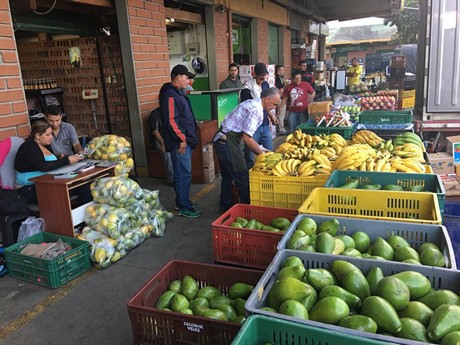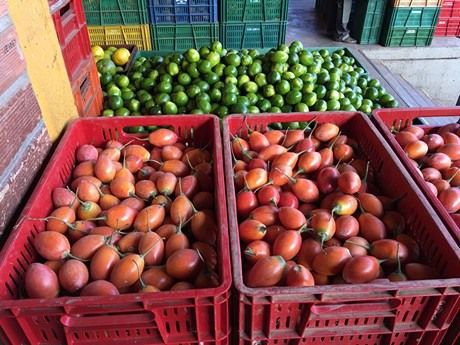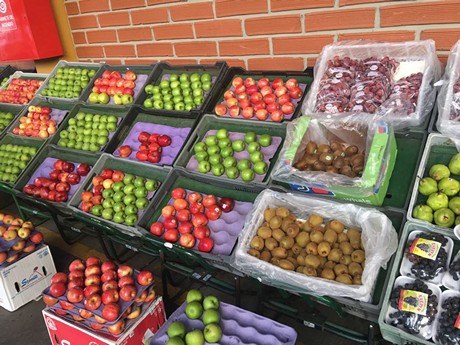Click here for the photo album

The market of Medellin is made up of 22 blocks of fresh produce, meat and fish. Some are reserved to producers, while most are managed by dealers who sell both local and imported produce. Part of the products are redistributed in the Antioquia region with its 2.5 million inhabitants.

The local produce is loose in plastic or wooden crates. Potatoes, carrots and yuca are in sacks or in the reused cardboard boxes of the imported products. There is a great variety of products, most of which are practically unknown in Europe - tamarillo, guayaba, maracuya, lulo, guanabana, granadilla, gulupa, pitaya, yuca.
Click here for the photo album

"The imported produce comes mainly from South America - nectarines, plums, Royal Gala apples and Packham's pears. Considering it's only mid-March, there is not a lot of European produce available. There are a few Granny Smiths from France, Red Delicious from Washington and small quantities of French kiwis. There were a few boxes of apples from Trentino and Piedmont, meaning there was also Italian produce at some point over the past few months."
Click here for the photo album
Santo Frio - Santa Barbara
It is an industrial company processing plantains, which are slightly larger than bananas and are only eaten cooked. It is the most popular fruit in Colombia (which produces 3.5 tons of it) because it is planted to provide shade for coffee plants. Santo Frio buys 100 tons of plantain a week from local producers. When the fruit is ripe, it is peeled, fried and frozen. The result is a sort of chip that tastes of banana. Most of the production is exported to the US.
Click here for the photo album
Frubelca - Tamesis
It is the leading company in the area. It processes citrus fruit - Valencia and Salustiana oranges, Tahiti lemons and grapefruit. It owns 1300 hectares and buys produce from local growers. It processes approximately 16,000 tons of fresh produce and 80,000 tons of produce destined to make juices.
The fresh produce warehouse is rather obsolete with two mechanical-grading processing lines. The fruit is sold to wholesale markets and retailers. 20% of the fruit is exported to nearby countries. The industrial processing section is very modern and the products are packaged directly for final consumers.
For further information:
Cesena Fiera
Via Dismano 3845
47522 Pievesestina di Cesena (FC) - Italy
Tel.: +39 0547 317435
Fax: +39 0547 318431
Email: [email protected]
Web: www.macfrut.com










